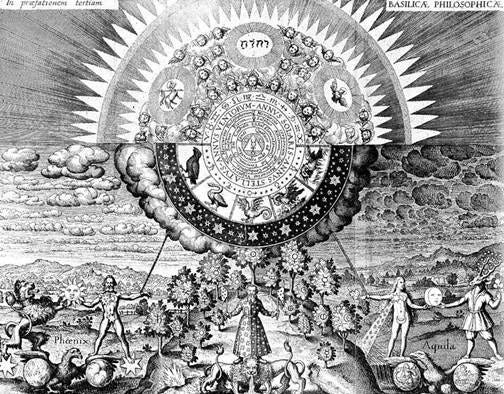Chapter 3: Symbols and Influences
Some early philosophical and cultural backgrounds
Chapter 2 left off with the question of which came first: the beautiful hand-painted cards now housed in various museums, or the early printed Tarots that became the basis of popular “modern” decks.
Many ideas about the origin of Tarot were shaped by a few scholars who depended largely on the belief that hand-painted cards were the earliest Tarots. And in fact, a whole social-historical approach to Tarot history has been based on the assumption that the Visconti-type painted cards were the prototypes of the deck, given that the surviving examples of painted cards are older than any known printed trumps by at least twenty or thirty years. [1]
And yet . . .
Chickens and Eggs
In his 1986 book Tarot Symbolism, Robert O’Neill disagreed with the paintings-to-print assumption. He pointed out that valuable hand-painted decks were likely to have been carefully preserved, whereas printed ones would have been discarded when they became worn — so it should not be surprising that painted cards have survived longer.




